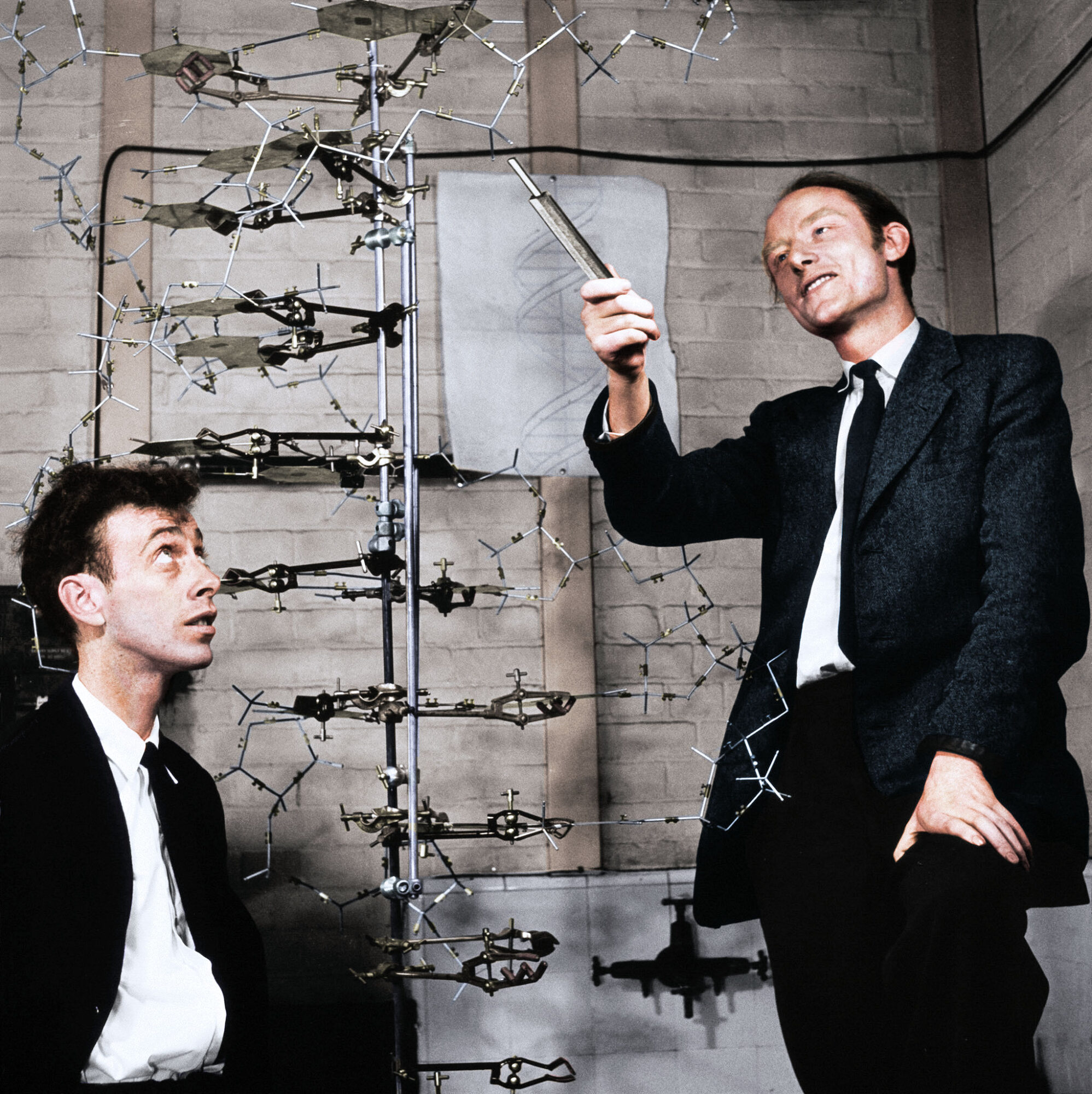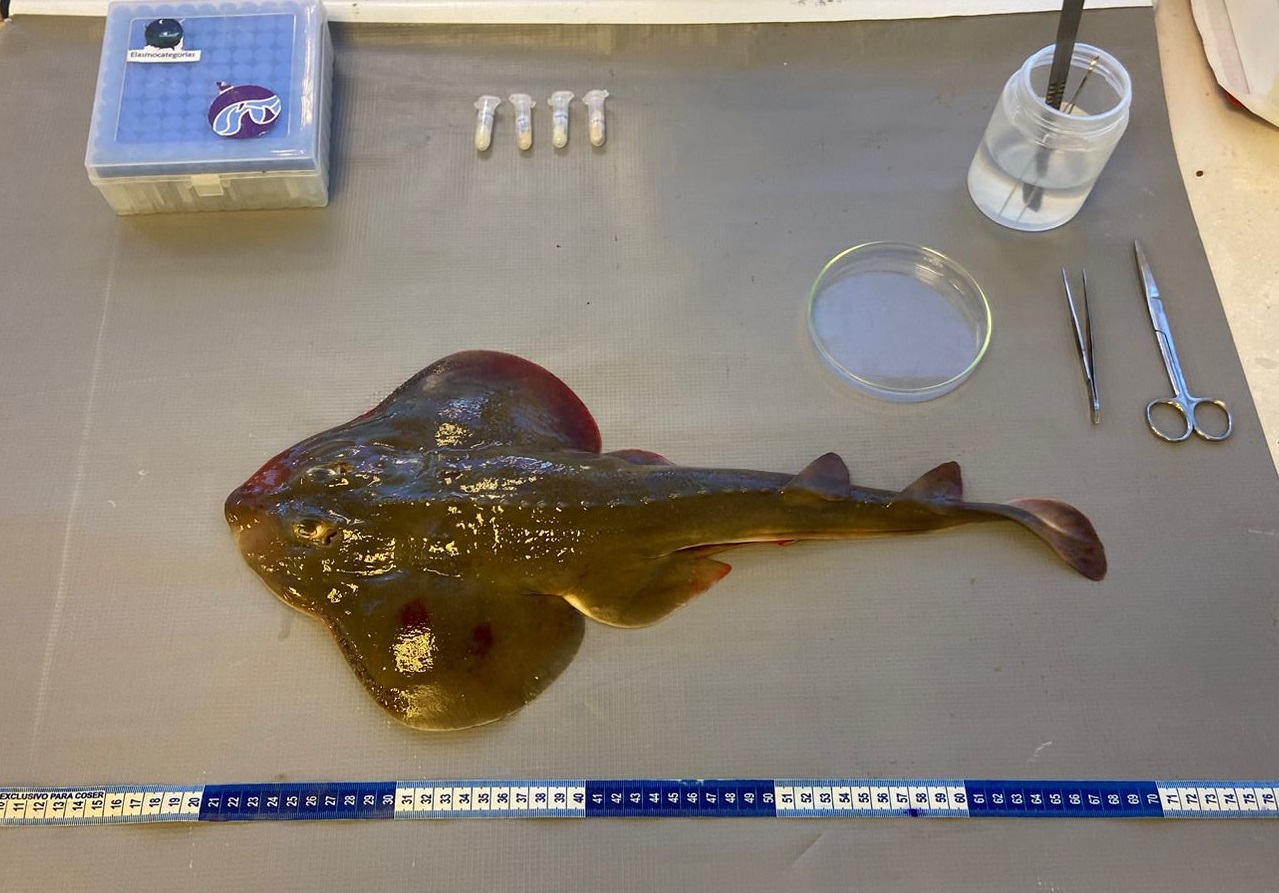Four letters, countless possibilities: Using DNA to protect Brazil’s Guitarfishes
In their article describing the double-helix structure of the DNA molecule, Watson and Crick, whose breakthrough was made possible by Rosalind Franklin’s critical X-ray diffraction data, wrote: “We wish to suggest a structure for the deoxyribonucleic acid (DNA). This structure has novel features which are of considerable biological interest.”. At the time, they could not have imagined that their discovery would also play a role in shark and ray conservation efforts more than 70 years later.

Francis Crick and James Watson observing the structure of the DNA molecule. Photo © imgur
The discovery of DNA’s structure opened the door to techniques that allow us to explore evolution, diversity, and ecology in remarkable detail. The evolutionary journey of a species, its body shape, how it adapts to the environment, and even its exact identification, all of this information is stored in its genetic code. Today, with modern DNA sequencing technologies, we can finally read and understand this code.
The Chola Guitarfish (P. percellens), Brazilian Guitarfish (Pseudobatos horkelli), and Shortnose Guitarfish (Zapteryx brevirostris) occur in Brazil, with the latter two being endemic species. They are among the most threatened elasmobranchs, facing intense human pressures. Despite this, very little is known about them from a genetic perspective. By studying their DNA, especially regions linked to key biological functions, we can uncover new information that may be vital for their conservation.

Biological and tissue sampling of Shortnose Guitarfish (Zapteryx brevirostris). Photo © Paulo Santos
Think of it this way: just as countless musical styles can be created using only seven natural notes (Do, Re, Mi, Fa, Sol, La, Si), life itself is written with just four letters (a, c, t, g). With this genetic “alphabet,” we can see how guitarfishes are adapting, or struggling to adapt, to challenges like pollution.
In the next blog posts, we’ll share updates on the progress of this project and, hopefully, bring some good conservation news that will sound like music to our ears.
